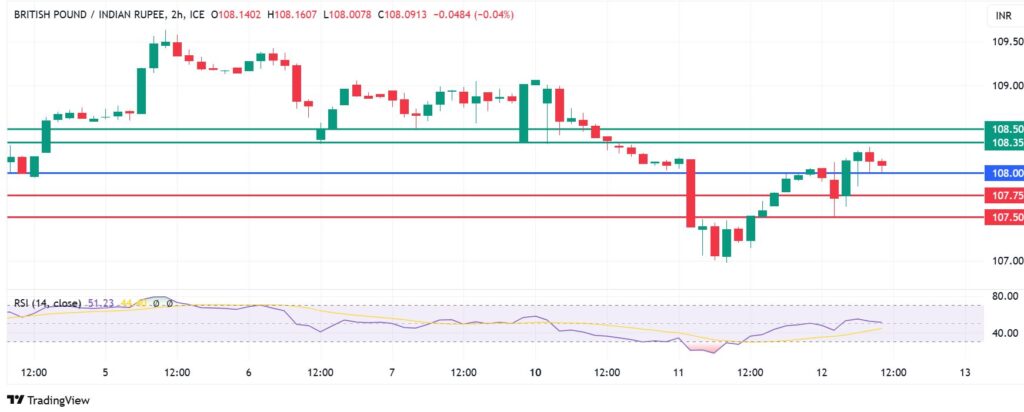The British snapped a four-session losing streak against the Indian rupee on Wednesday, trading at 108.09 at the time of writing, marginally up by 0.1% on the daily chart. The rupee faces pressure from multiple fronts.
The Reserve Bank of India has intervened in the forex market this week to prevent the rupee from sliding further against the US dollar. The move came after it went to record lows of 87.97. Goldman Sachs estimates that the RBI sold as much as $11 billion in this week’s intervention.
Both the Bank of England (BoE) and RBI cut interest rates by 0.25% last week. Prior to the decisions, the GBPINR pair faced rejection at the 109.60 level. That has been a key resistance level since October 2024. The rupee is under pressure from a multiplicity of factors, ranging from a weak sentiment around India’s economic growth prospects to increased hedging activities amid bearish bias.
The RBI forecasts the world’s fifth-largest economy to grow at a rate of 6.7% in 2025, the slowest in four years. The central bank’s governor, Sanjay Malhotra hinted at the possibility of additional cuts this year to support the economy. That favours the GBPINR pair to stay on the ascending trajectory.
Meanwhile, the BoE also revised its growth projections for the UK economy downwards. The central bank now forecast that the economy will grow at a rate of 0.75%, down from 1.5% forecast earlier. That could limit the GBPINR pair’s upside in the coming weeks.
The momentum on GBPINR signals a likely continuation of the upside. The pair pivots at 108.00 and will likely encounter the first resistance at 108.35. Breaking above that level could clear the path to head higher and test the second resistance at 108.50.
On the other hand, breaking below 108.00 will shift the momentum to the downside. With that, immediate support will likely be at 107.75. The upside thesis will be invalid if the pair breaks above that level. That could strengthen the downside momentum and test 107.50.


This post was last modified on Feb 12, 2025, 11:32 GMT+0100 11:32